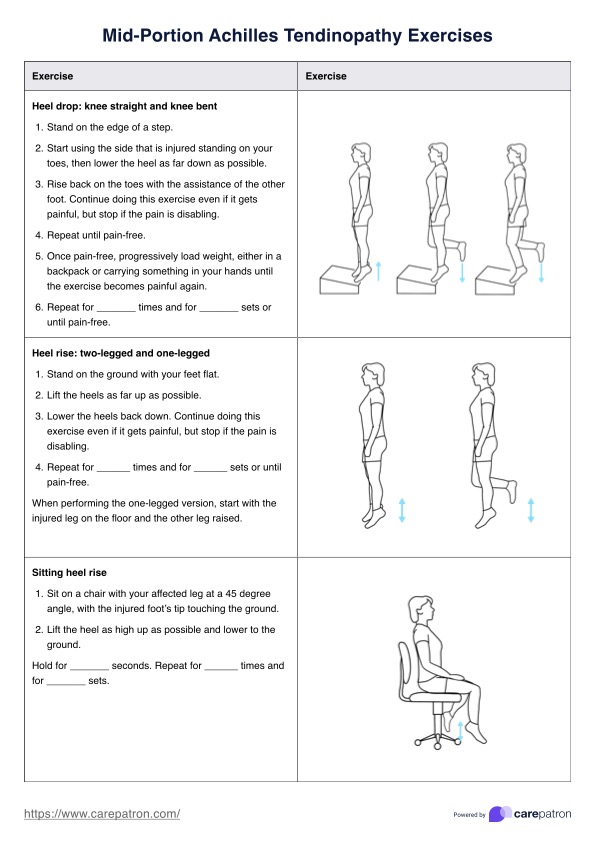Mid-portion Achilles tendinopathy occurs 2 to 7 cm above the tendon’s insertion on the heel, primarily involving tensile loading, while insertional tendinopathy affects the tendon’s attachment site on the calcaneus and is associated with compressive forces.

Mid-Portion Achilles Tendinopathy Exercises Handout
Click here to learn more about achilles tendinopathy and recommended exercises to support healing.
Use Template
Mid-Portion Achilles Tendinopathy Exercises Handout Template
Commonly asked questions
To stretch the mid-portion of the Achilles tendon, you can perform a heel drop exercise by standing on the edge of a step with your heels hanging off, then slowly lowering your heels below the step level and holding for a few seconds.
EHR and practice management software
Get started for free
*No credit card required
Free
$0/usd
Unlimited clients
Telehealth
1GB of storage
Client portal text
Automated billing and online payments










